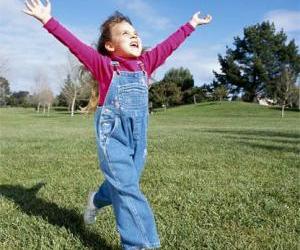Autism Treatment Washington DC
ABA, Therapy Services, Behavorial Intervention, Early Intervention, Training/Seminars, Verbal Behavior
Ages Supported
Kindergarten,Preschool

Adult Support, Career Counseling, Educational Advocacy, Job Coach, Marriage & Family Counseling, Marriage & Family Counseling, Medical, Research, Social Skills Training, Support Group Meetings, Therapy Providers, Training/Seminars
Ages Supported
Preschool,Kindergarten,1-5 Grade,6-8 Grade,9-10 Grade,11-12 Grade,Adult

Washington DC, DC
Other, Psychological Counseling

Arlington, VA
Early Intervention, Support Organization, Therapy Providers

ABA, Therapy Services, ABA/Discrete Trial, Behavorial Intervention, Camps, Early Intervention, Private School (Autism Only), Schools, Preschool, Typical, Social Skills Training, Verbal Behavior
Ages Supported
Preschool

Washington, MD
Medical, Psychological Counseling, Research, Research
Ages Supported
Preschool,Kindergarten,1-5 Grade,6-8 Grade,9-10 Grade,11-12 Grade

Arlington, VA
Occupational Therapy, Speech Therapy, Therapy Providers

Other, Therapy Providers

Washington, DC
Occupational Therapy, Sensory Integration, Therapy Providers

Hyattsville, MD
Early Intervention, Marriage & Family Counseling, Play Therapy, Social Skills Training, Speech Therapy, Therapy Providers, Training/Seminars
Ages Supported
Preschool,Kindergarten,1-5 Grade,6-8 Grade


Gentle Horses Help Rein in Childhood Autism
Gentle horses help rein in childhood autismE.J. MundellOver the eight years that Mary Cusack has been raising her son, Nicky, she's become familiar with finger 'stims' -- the repetitive hand movements that Nicky and others with autism often display. If left unchecked, Nicky's stimming can interfere with everyday activities. But Mary and her husband, Tom, have found a solution to the problem: therapeutic horseback riding. For reasons that aren't fully understood, Nicky's stims "only go away when he rides," Mary Cusack said on a morning spent with her family at the My Shine therapeutic riding program, run at a stable in rural Suffolk County, N.Y. "Stimming interferes with his abilities at school," she said. "But I always say, 'Don't worry, as soon as we get him back on the horse I can guarantee that for every month that he hasn't been riding, it's going to take one week and then we aren't going to see the stim again.'" After a few sessions on horseback, Nicky's hands stop their restless movement. Tom Cusack calls his son's therapeutic riding sessions "the one therapy we would never give up," because it has already given Nicky so much. My Shine is just one of many equine therapy centers spread across the United States, with instructors accredited through the North American Riding for the Handicapped Association (NARHA). A nonprofit program founded by Barbara Kruger (whose son has autism), My Shine, based in Huntington, N.Y., has grown from serving just a few special-needs children four years ago to more than 50 kids today. Youngsters typically visit once every week, traversing an indoor or outdoor ring at a varied pace with the same horse "partner," along with one highly trained instructor and one volunteer. Called "equine therapy" or "therapeutic riding," the treatment appears to work because many children on the autism spectrum appear to form deep connections with horses and horse riding. For many, the activity leads to new confidence and improved language skills as they link the spoken word with the physicality of riding. That's important, since many children with classic autism are either nonverbal or minimally verbal, experts noted. "Working with a horse can help a child to learn how to communicate using nonverbal behavior," explained Geraldine Dawson, chief science officer of the national advocacy group Autism Speaks. "The child may learn that by making a certain movement or sound the horse will respond in a specific way. They can also learn to monitor their own behavior and look at how it affects the horse." That can help build confidence, experts say, as well as better socialization in terms of eye contact and language. Edith Heinsohn has seen those types of changes firsthand. She started bringing her son Scott, 8, to My Shine a year ago. Scott, who has Down syndrome and autism, "gets a lot from the horses," Heinsohn said. "There's a lot of interaction with the horse, a lot of eye contact, he actually starts... |
Click here to read the rest of this article from Autism Support Network
Moving Out of State to Get Autism Treatment
Moving out of state to get autism treatmentPaul FryshBefore Wendy Radcliff agreed to marry Scott Finn, she made it clear they would have to live in her home state of West Virginia. Politically active, Radcliff loved West Virginia and wanted to spend her life there, helping to make it a better place. The couple married, had a son, Max, and built their life together in Radcliff's hometown of Charleston. Then, just before his second birthday, Max was diagnosed with autism. Radcliff had insurance -- good insurance, she says -- through West Virginia's Public Employees Insurance Agency, which she received through her work for the state. But although PEIA paid for the autism diagnosis, it would not pay for the prescribed treatment -- applied behavior analysis, or ABA. There are a similar models that go by different names, but ABA is by far the best-known. ABA is typically administered one on one, in a program that is customized to the individual. It involves breaking down learning tasks into small steps, and teaching them over and over in a reinforcing way until they are mastered. It is the best-researched and most effective current treatment for autism, experts say. By the time Max was 4, Radcliff and Finn were spending $750 to $1,000 a week to treat Max. "Our credit cards were being used to pay for things that they shouldn't be paying for, like groceries and utility bills, because we were spending any cash we had on our therapists," says Radcliff. And even then, they struggled to get the right therapy, Radcliff says. "In West Virginia, because insurance will not cover ABA, it's very difficult to find people that know and are trained in how to do ABA -- they're just not available and around because of that," says Radcliff. They cobbled together a few hours a week of basic ABA therapy, sometimes administered by inexperienced, overwhelmed or noncertified therapists. At one point, desperate for help, Radcliff even had her brother trained to administer a few hours a week of basic ABA therapy, she says. "We only knew of a couple of ABA therapists even in the Kanawha Valley where we lived. And [they] were being overused by people -- they just didn't have enough hours in the day." Research suggests any child with autism, regardless of severity, has an equal chance at "best outcome" if the child completes an ABA program (average is three years to completion) that starts before the age of 3 1/2, says Kristi Oldham, program director for the Lovaas Institute Midwest Headquarters in Minneapolis, Minnesota, which provides early intervention services for kids with autism. Sixty-seven percent of such children can expect a "best outcome," which Lovaas defines as a child who is mainstreamed in a classroom without additional support, has no diagnoses on the autism spectrum and has a typical IQ, Oldham says. And yet PEIA, like many insurance companies across the nation, does not cover the treatment for kids diagnosed with autism. ... |
Click here to read the rest of this article from Autism Support Network
Social Thinking and Applied Behavior Analysis - Not "Black and White"
Social Thinking and Applied Behavior Analysis - not "black and white"Michelle Garcia Winner and Chris AbildgaardThere is a tendency when exploring treatment options to build walls and think in the black and white. As we have moved from developing treatment with people with classical autism to exploring and developing treatments for the entire autism spectrum and related disabilities, we have to shift from thinking there is one way to treat by embracing a range of approaches to better meet the range of challenges our students and adults experience across the “spectrum.” One’s language and cognitive abilities matter greatly when exploring methods of intervention or “treatment”. The huge shift in discussing treatment for those with “Autism” to those on the “Autism Spectrum” is really about understanding how to design programs for students with different abilities in language, cognition, sensory and perspective taking abilities. As we now have caseloads filled with ASD students with reasonable to advanced verbal intelligence scores and spontaneous expressive and receptive language abilities we have had to move into a more sophisticated treatment approach. The treatments chosen are not only rooted in language based explanations (e.g. Social Stories®) but also need to teach more nuance and sophistication as this new generation of those we now call high functioning “ASD” are expected to merge and adapt into the neurotypical world of functioning in adulthood. Furthermore, our teaching methods need to also address a multitude of issues ranging from sensory needs to compelling mental health issues that coexist and impact the majority of our “brighter” students. As we strive, collectively, to develop models of intervention that serve our diverse population of folks with ASD, I hope we are slowly taking down the walls and arguments about whether to use Applied Behavior Analysis (ABA), Social Thinking, Floortime®, SCERTS®, mental health supports, etc.. and instead take the best all of these programs have to offer to decide which to use and how to use them together to form a meaningful “intervention plan” that is individualized to the needs of each of our students/clients. The SCERTS® model is a holistic treatment program that considers all aspects of the child and how best to serve the child given many different factors. As its name suggests, it explores treatment for social communication and emotional regulation by providing transactional supports. In keeping an eye on all factors that impact a student, methods of intervention and teaching approaches need to be multifaceted. Social Thinking, sensory integration, relationship development, structured teaching, use of some principals of ABA, etc to better help support and teach a student can all be considered for an individual within the bandwidth of this SCERTS model. As we use those visible and invisible “transactional supports” within one’s environment we can explore how our programs ov... |
Click here to read the rest of this article from Autism Support Network




